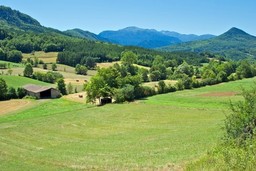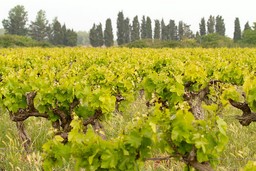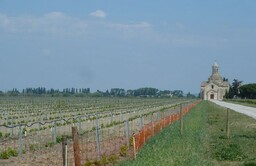14. France
France
French geography
France is a large nation. It is located in Western Europe, on the shores of the Atlantic Ocean and the Mediterranean Sea.
Westerly winds bring a lot of rainfall from the Atlantic to the French countryside. The warm winds also help to make the winter more temperate. As a result, the French climate is very suitable for agriculture.
The river Seine runs through the French capital of Paris. It is connected to the other large French rivers via canals. This makes it possible for boats and ships to travel through France, from the Atlantic to the Mediterranean.
Westerly winds bring a lot of rainfall from the Atlantic to the French countryside. The warm winds also help to make the winter more temperate. As a result, the French climate is very suitable for agriculture.
The river Seine runs through the French capital of Paris. It is connected to the other large French rivers via canals. This makes it possible for boats and ships to travel through France, from the Atlantic to the Mediterranean.
The largest French cities are located on the sea shore and alongside rivers. These cities include Marseilles, Nice and Bordeaux. The highland area in the middle of the country, the Massif Central, is visible on the map as a large, brown area.
The Alps are also partially located within French borders. Mont Blanc, the highest mountain in the Alps, is almost five kilometers tall and located on the border of France and Italy. Another large mountain range is found in the southern parts of the nations. This mountain range, the Pyrenees, is located on the border between France and Spain.

French agriculture
France consists mostly of lowland areas with nutrient-rich soil. The French climate is temperate and receives a lot of rainfall. It is therefore no surprise that France is a significant agricultural nation.
French farms are known for their cattle, grains, fruits and vegetables.
Grapes that are grown in French river valleys are used to make world-famous wine.
On the Mediterranean coast, the climate is warmer and more dry, which means that it is suitable for the farming of olives and citrus fruits.
French cuisine is known for its breads and cheeses. Baquettes, croissants and cheeses are staples of the French diet.
In the Central Massif and the Alps, the higher elevations make agriculture less profitable. In these areas, most people gain their livelihoods from tourism instead of agriculture.
French farms are known for their cattle, grains, fruits and vegetables.
Grapes that are grown in French river valleys are used to make world-famous wine.
On the Mediterranean coast, the climate is warmer and more dry, which means that it is suitable for the farming of olives and citrus fruits.
French cuisine is known for its breads and cheeses. Baquettes, croissants and cheeses are staples of the French diet.
In the Central Massif and the Alps, the higher elevations make agriculture less profitable. In these areas, most people gain their livelihoods from tourism instead of agriculture.
Image on the right: A French market. The French climate is suitable for agriculture, which is reflected in the amount of fresh goods available in the market.
French industry
In addition to being one of the most important agricultural producers in Europe, France is also one of the world's most important industrial nations. The French bedrock is rich in raw materials required for industry.
The French industrial sector is known for its machinery and vehicles, such as cars and airplanes. The most well-known French car brands are Peugeot, Renault and Citroën. Airbus airplanes are also made in France.
The Airbus 380 (pictured on the right) is the world's largest passenger airplane. It can carry up to 900 people. The parts of the airplane are made in many different nations, but they are assembled in France.
The French industrial sector is known for its machinery and vehicles, such as cars and airplanes. The most well-known French car brands are Peugeot, Renault and Citroën. Airbus airplanes are also made in France.
The Airbus 380 (pictured on the right) is the world's largest passenger airplane. It can carry up to 900 people. The parts of the airplane are made in many different nations, but they are assembled in France.
Industry requires a lot of electricity. In France, a large part of this electricity is produced in nuclear power plants.
Paris
The capital city of France is Paris.
Its most important tourist attraction is the Eiffel Tower.
Other well-known sights include the Arc de Triomphe, the Notre-Dame cathedral and the Louvre.
Paris is the heart of France. This can be seen by looking at the nation's highway network: most French roads and railways travel through its capital city.
Its most important tourist attraction is the Eiffel Tower.
Other well-known sights include the Arc de Triomphe, the Notre-Dame cathedral and the Louvre.
Paris is the heart of France. This can be seen by looking at the nation's highway network: most French roads and railways travel through its capital city.
The French people are polite
The official language of France is French. The French language is known for its formal politeness.
When the French greet one another, they usually combine the verbal greeting with a series of kisses on the other person's cheeks. The name of the other person is usually a part of the greeting, as well.
Bonjour, madame Dubois! = Good day / Good morning, mrs. Dubois!
Bonsoir, monsieur Didier ! = Good evening, mr. Didier!
Au revoir, mademoiselle Dupont ! = Goodbye, ms. Dupont!
Salut, Amélie ! = Hello, Amélie!
Bonsoir, monsieur Didier ! = Good evening, mr. Didier!
Au revoir, mademoiselle Dupont ! = Goodbye, ms. Dupont!
Salut, Amélie ! = Hello, Amélie!
The number of cheek kisses can vary between two and four, but the first kiss should always be given on the person's left cheek. The cheek kiss is not a real kiss: instead, only the cheeks of the two persons touch. Among men, handshakes are more common than cheek kisses.
Des salutations = Greetings
Bonjour ! [bɔ̃ʒuR] = Good morning! / Good day! / Hello!
Bonsoir ! [bɔ̃swaR] = Good evening!
Bonne nuit ! [bɔnnɥi] = Good night!
Salut ! [saly] = Hello!
Au revoir ! [oRvwaR] = Goodbye!
Ciao ! [tʃao] = See you!
À bientôt ! [abjɛ̃to] = See you soon!
À plus ! [aplys] = See you later!
Bonjour ! [bɔ̃ʒuR] = Good morning! / Good day! / Hello!
Bonsoir ! [bɔ̃swaR] = Good evening!
Bonne nuit ! [bɔnnɥi] = Good night!
Salut ! [saly] = Hello!
Au revoir ! [oRvwaR] = Goodbye!
Ciao ! [tʃao] = See you!
À bientôt ! [abjɛ̃to] = See you soon!
À plus ! [aplys] = See you later!










